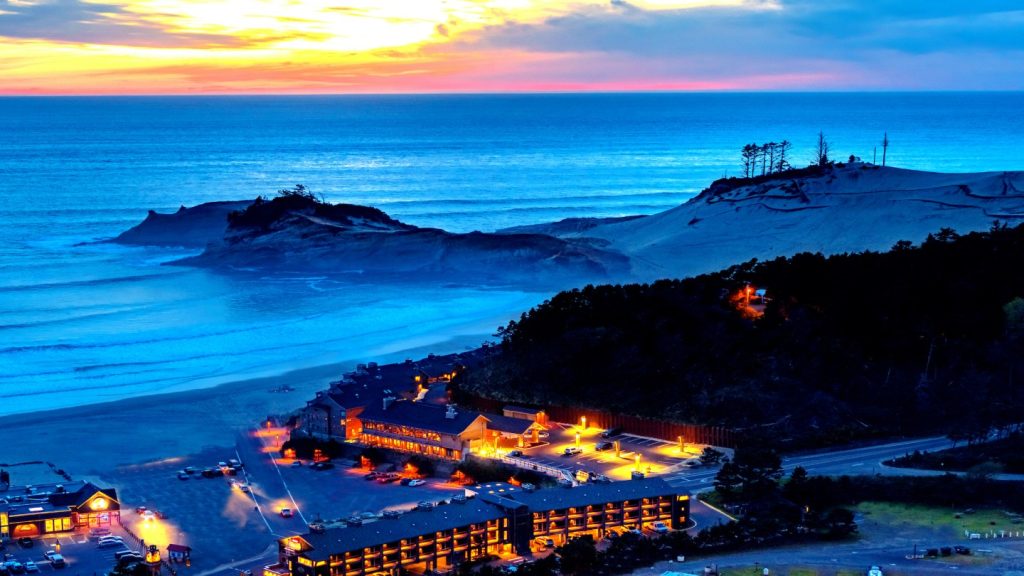

The value of the Earth’s oceans is estimated to be more than $24trn, while every year about $2.5trn worth of economic activity is generated by sectors linked to the blue economy, according to the World Wildlife Fund (WWF). If the oceans were a country, they would form the seventh-largest economy in the world. However, environmental issues are putting the oceans in jeopardy.
Louise Heaps, head of sustainable blue economy for the WWF, says that in collaboration with the the European Commission, the European Investment Bank and the Prince of Wales’s International Sustainability Unit, the Sustainable Blue Economy Finance Principles were developed and then launched in October 2018, forming the world’s first global framework designed to guide ocean-based finance towards a more sustainable future. Now hosted by the UN Environmental Programme’s (UNEP) Sustainable Blue Economy Finance Initiative, if widely adopted the principles could help to positively transform future ocean development.
These 14 guiding principles support the implementation of the UN’s Sustainable Development Goal (SDG) number 14, to conserve and sustainably use the oceans, seas and marine resources. The UNEP Finance Initiative defines a sustainable blue economy as one that “seeks to promote economic growth and preserve and improve livelihoods across a range of sectors, while ensuring the sustainable use of marine resources”.
A transition to a sustainable blue economy will require innovation and partnership on a scale not seen before, creating portfolios that align with SDG14, according to Heaps.
“Alongside redirecting mainstream finance, new forms of finance, incentives and disincentives will need to be created to ensure that finance is targeted at sustainable development,” she adds. “To enable this, stronger regulation and industry-specific targets, measures and guidelines will be required.”
Closing the SDG gap through investment
The financing gap to achieve all 17 SDGs by the 2030 target is estimated at an annual $2.5trn, according to the UN. Ted Janulis, founder and principal of Investable Oceans, an investment hub that connects investors with sustainable blue economy opportunities, says: “Philanthropy and concessionary investing, where there is a discount to market levels, are vital to responsible ocean stewardship, as is the work that non-governmental organisations and governments do around the world. But if you really want to tackle the SDG funding shortfall, it makes sense to unlock additional capital through market-based investing.”
How well do you really know your competitors?
Access the most comprehensive Company Profiles on the market, powered by GlobalData. Save hours of research. Gain competitive edge.

Thank you!
Your download email will arrive shortly
Not ready to buy yet? Download a free sample
We are confident about the unique quality of our Company Profiles. However, we want you to make the most beneficial decision for your business, so we offer a free sample that you can download by submitting the below form
By GlobalDataThe oceans host many sustainable investment opportunities. Investable Oceans divides the sectors for investing in the blue economy into five areas:
• energy solutions
• fisheries and aquaculture
• plastics and pollution
• shipping and ports
• tourism
Turning the blue economy green
Investment surrounding plastics – along with the harm these plastics can do to the ocean and marine life – is getting a lot of attention, explains Janulis. He attributes this to the work of foundations, research and influencers.
“All kinds of companies have sprouted up around that new energy and sense of missing, and it is anything from reusable cups to more efficient recycling to designing new substitute materials,” he says.
Plant life “in and from the sea” is also experiencing an increased awareness, adds Janulis, referring to seaweed, mangroves and seagrass.
“This new focus is coming from increased attention on human health and sustainable food sources, as well as concern about coastline degradation and the need to sequester carbon,” he says.
Mangrove forests in particular are under threat, which is a worry for many conservationists given that they not only provide coastal protection, but also store carbon, making these trees a powerful tool against climate change.
The blue economy and food security
With the world population expected to reach 8.5 billion by 2030, the case for food security is as pressing as ever. Aquaculture has a potentially prominent role to play here, providing opportunities for investment in the blue economy.
“Generating protein on land is less efficient from a resource perspective [than it is generating it on water] and can be costly in many ways, including environmental,” says Janulis. “Because of that, investing in aquaculture will continue to grow in importance and popularity.”
However, as the oceans and the life in and around them come under greater man-made threats, the need for a sustainable blue economy is more pressing than ever.
“Urgent investment into the restoration, protection and effective management of ocean habitats and ecosystems is required if we are to deliver a sustainable blue economy; particularly those which secure human well-being through coastal protection, carbon dioxide sequestration and the provision of food and livelihoods,” says Heaps.
Private investment has an important role to play in saving the oceans, given that their sustainability depends upon a balance being found between environmental well-being and economic activity. It has been proved that it is possible to save and regenerate the oceans while also making a profit. However, if the short-term gains from the blue economy are given too much credence, and its long-term sustainability ignored, then the risk is that future generations will be denied the opportunities provided by the Earth’s bountiful and beautiful oceans.







